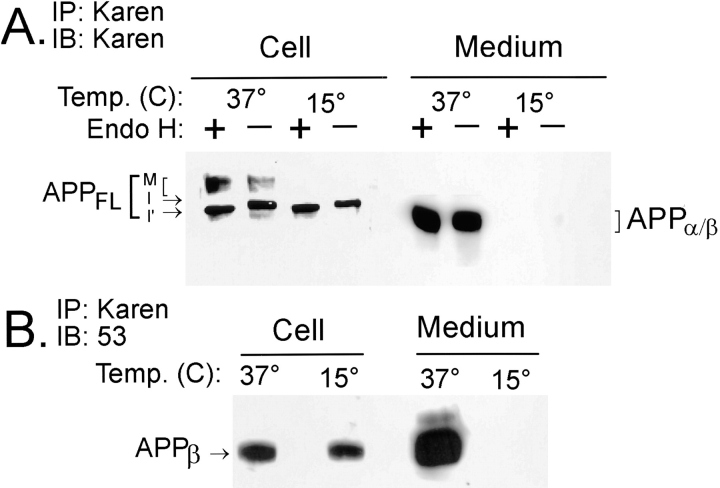Figure 9.
APPβ is generated in the ER/IC of NT2N neurons. Approximately 6 × 106 NT2N neurons were incubated at either 15° or 37°C for 16 h. The cell lysates and media were harvested and immunoprecipitated with Karen. (A) The immunoprecipitates were then split, and half of the samples was treated with Endo H for 18 h, while the other half was mock digested. Subsequent to this step, the immunoprecipitates were separated by SDS-PAGE, transferred onto nitrocellulose replicas, and probed with the antibody Karen. The following observations serve to verify the effectiveness of the temperature block: (a) immature forms of APPFL (I and I′) in the cell lysate retain Endo H sensitivity at 15°C; (b) mature glycosylated forms of APPFL (M) in the cell lysate are not detected at 15°C; and (c) secreted fragments are not detected in the conditioned medium at 15°C. (B) Immunoprecipitates were separated by SDS-PAGE, transferred onto nitrocellulose replicas, and probed with antibody 53. APPβ continued to be produced intracellularly despite the effective temperature block. However, secreted APPβ was not detected in the medium at 15°C. Note that splitting intracellular APPβ samples recovered at 15°C for Endo H digestion decreased the yield to below the level of detection by this assay (data not shown). M, mature APPFL; I, immature APPFL; I′, immature APPFL demonstrating a mobility shift due to Endo H sensitivity.

